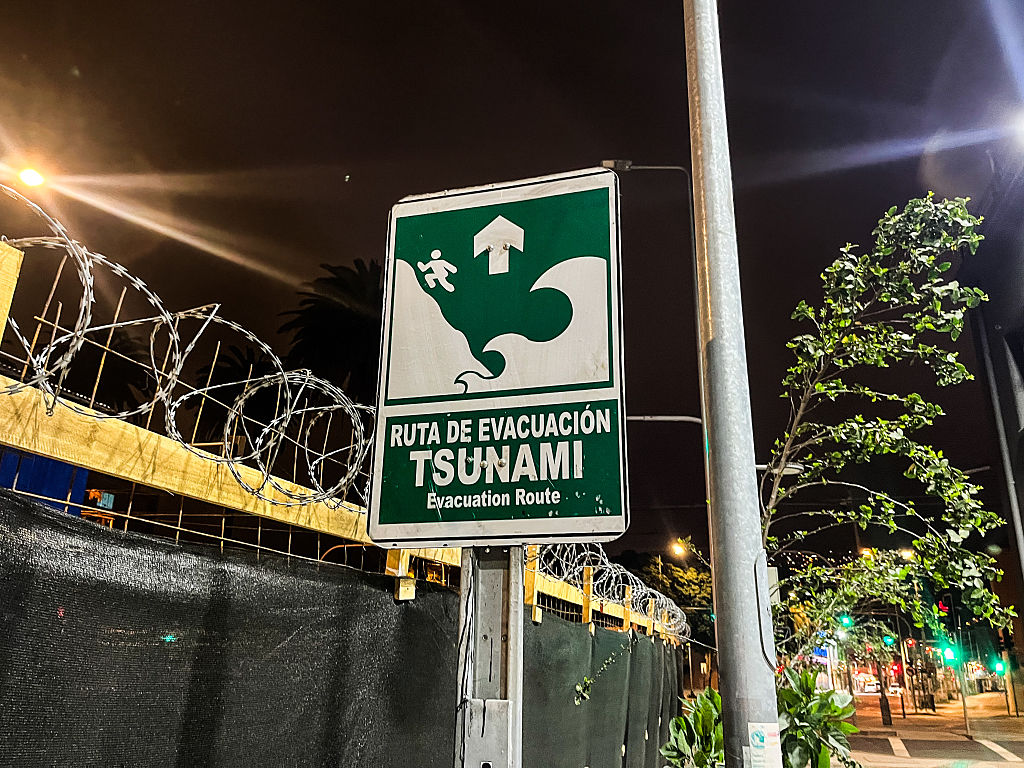More than a dozen countries are on alert for potential tsunami activity after the world’s sixth-biggest earthquake hit eastern Russia.
The 8.8 magnitude earthquake that struck Russia’s Kamchatka Peninsula on Wednesday morning has already resulted in the first tsunami waves on Japan’s Hokkaido coast, while residents in Hawaii have been advised to move to higher ground amid blaring tsunami sirens. Much of the West Coast, Alaska, and countries in the Pacific have also received tsunami alerts of varying levels.
[time-brightcove not-tgx=”true”]
Read More: Sixth-Largest Earthquake on Record Triggers Global Tsunami Warnings
Here’s what to know in the event of a tsunami.
What is a tsunami?
A tsunami is a series of massive waves caused by earthquakes or undersea volcanic eruptions, according to the National Oceanic and Atmospheric Administration’s National Ocean Service. Seismic activity can cause sudden ocean water displacement which results in strong currents and powerful waves that build in height as they approach the shore.
The waves radiate in all directions and can travel as fast as a jet plane over deep waters, slowing down as they get to shallower depths.
Tsunamis consist of more than one wave that can occur across an extended period of time. The first wave is also not always the biggest—subsequent waves can build in height suddenly and dramatically. Large tsunamis can also continue for days. Japan has warned that tsunamis resulting from the Kamchatka quake may last more than a day.
How are tsunamis forecast?
While several countries have issued tsunami forecasts, each tsunami that results from this quake will likely range in severity. The waves that hit Russia’s port town of Severo-Kurilsk had a height of 10-13 ft (3-4 m), while those that hit Japan’s Hokkaido coast were around 12 in (30 cm) to 16 in (40 cm).
Tsunamis are also not possible to precisely predict, according to the U.S. National Weather Service. Instead, tsunami warning centers forecast tsunamis based on the size and location of an earthquake that precedes it, as well as forecast models to estimate wave height, location, and arrival times once a tsunami is already detected.
The NOAA uses Deep-ocean Assessment and Reporting of Tsunami (DART) systems in partnership with a broader international network of systems to detect, measure, and report in real-time tsunamis in the open ocean by measuring changes in water pressure as a tsunami wave passes.
What to do in a tsunami warning
The U.S. follows a four-tier system for tsunami alerts. In descending levels of severity, these are: warning, advisory, watch, and information statement, according to the NWS.
People should also be alert to visible natural signs of a tsunami, including a loud roar from the ocean and a sudden rise or fall of water levels. A sudden retraction in water from the shoreline is an indication that a tsunami may occur.
A tsunami warning is the highest alert for a tsunami. The NWS says a tsunami warning means: “Take Action—Danger! A tsunami that may cause widespread flooding is expected or occurring. Dangerous coastal flooding and powerful currents are possible and may continue for several hours or days after initial arrival.”
In the event of a tsunami warning, people are advised to evacuate immediately and move to high ground and as far inland as possible (at least 100 ft above sea level or one mile inland), and follow the instructions of local authorities. Some areas under threat, such as Hawaii, also open emergency shelters for those evacuating.
While people should move to higher ground, most tall buildings are not built to withstand the impact of tsunamis, according to the NWS. If no other option is available, the upper stories of some tall and strong buildings may provide some protection.
If you are in a boat at sea at the time of a tsunami warning, you should go out to sea to a safe depth, the Department of Homeland Security’s Ready.gov says. If you are in a harbor, you should leave your boat and move to a safe area on land.
What to do in a tsunami advisory
A tsunami advisory is the second-highest alert level by the NWS. The agency says a tsunami advisory means: “Take Action—A tsunami with potential for strong currents or waves dangerous to those in or very near the water is expected or occurring. There may be flooding of beach and harbor areas.”
People are advised to stay out of the water and away from beaches and waterways, as well as to follow the instructions of local authorities.
What other tsunami alerts mean
According to the NWS, a tsunami watch means:“Be Prepared—A distant earthquake has occurred. A tsunami is possible.” In the event of a tsunami watch, people are advised to stay alert for more information and be prepared to take action if it becomes necessary.
A tsunami information statement is the lowest alert level and means: “Relax—An earthquake has occurred, but there is no threat or it was very far away and the threat has not been determined. In most cases, there is no threat of a destructive tsunami.”
For international partners in the Pacific and Caribbean, the U.S. issues tsunami threats as opposed to alerts. A threat message outlines the potential impact to people, structures, and ecosystems according to the NWS. Other countries then determine what alert to issue.
Other countries also often use tiered alert systems, although they may use different terms for each. People should check their local emergency management systems for any alerts and instructions.For more information from different tsunami warning systems, visit tsunami.gov or refer to your local weather or emergency management center, such as Japan’s Meteorological Agency and Hawaii’s Emergency Management Agency.

